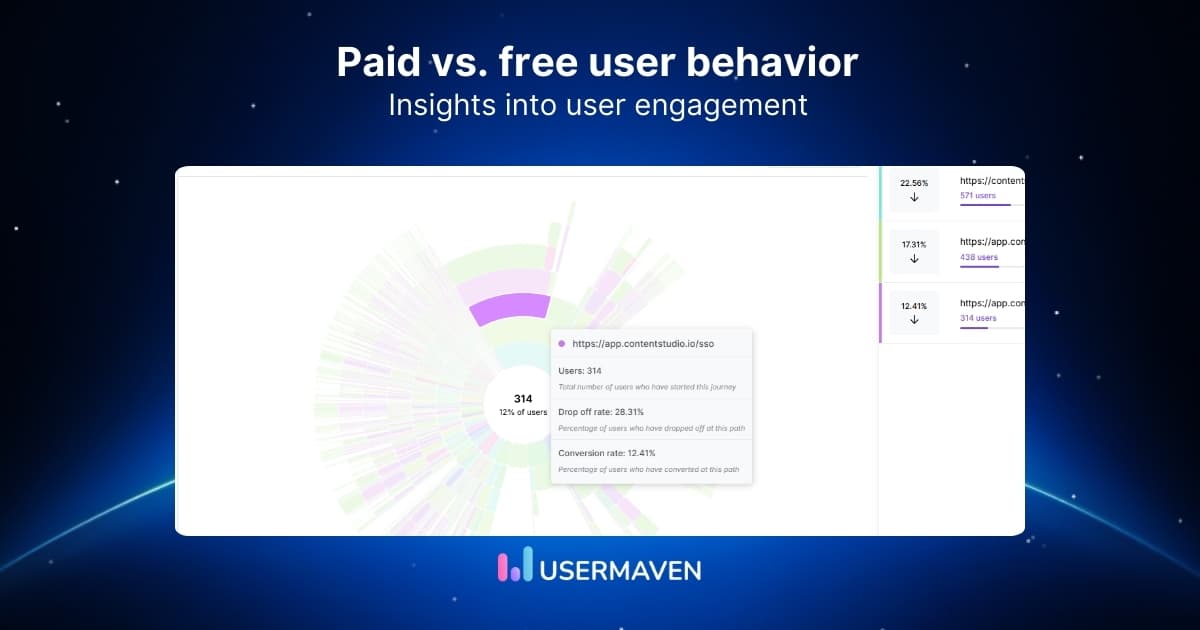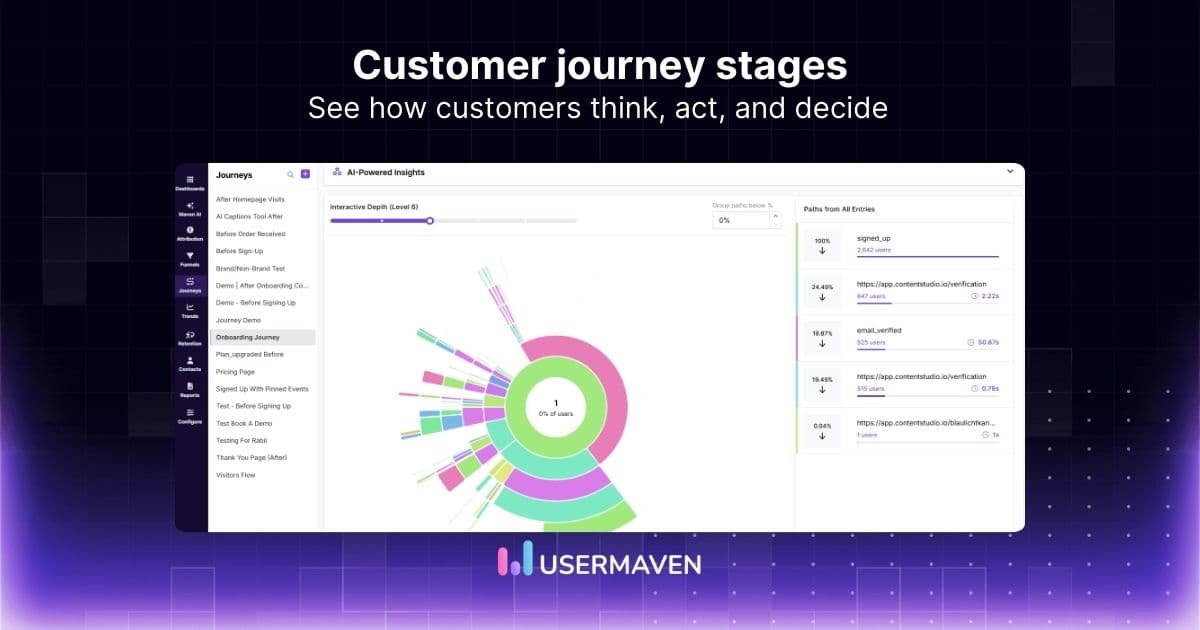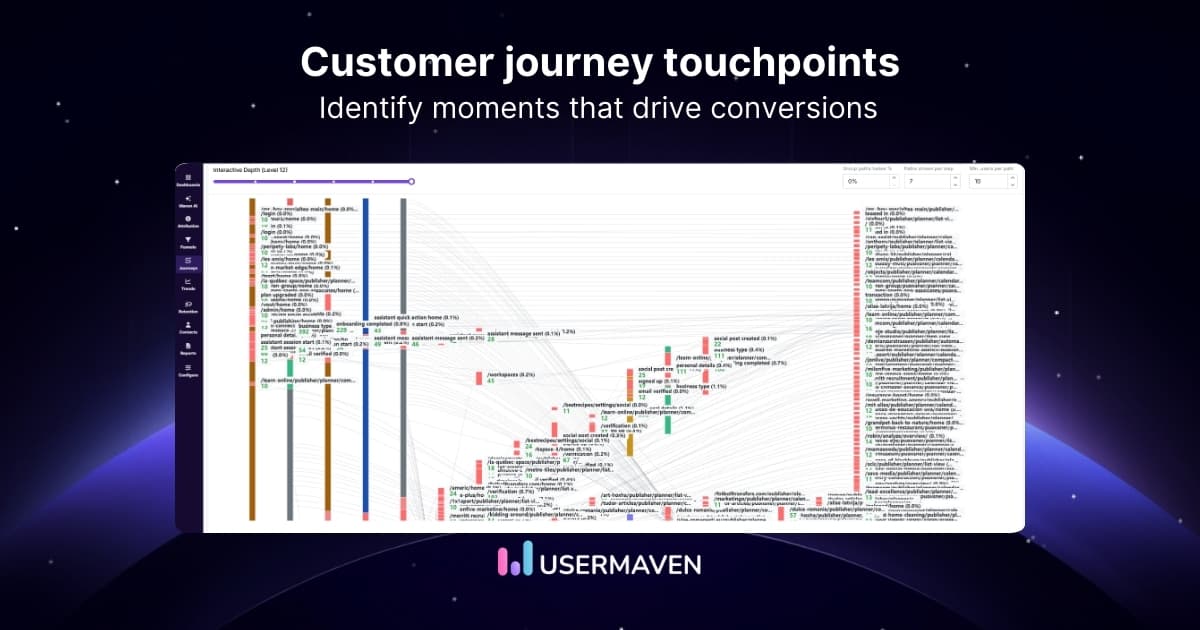Table of contents
Campaign tracking: Understanding where your traffic comes from
Mar 22, 2024
5 mins read
Written by Mahnoor Shahid
Unsure which marketing efforts bring visitors to your site?
Campaign tracking helps you understand how different marketing activities attract visitors.
Go beyond just website traffic numbers!
With campaign tracking, you can see which campaigns are most successful at converting visitors into doing what you want them to do on your site, such as signing up for a newsletter or making a purchase.
Get the data to make smarter marketing decisions!
Campaign tracking lets you see how many visitors came from Google ads, social channels, email campaigns, and newsletters, helping you optimize your campaigns for better results.
Let’s get started;
What is campaign tracking?
Campaign tracking is a way to measure how well your marketing efforts are working. It involves setting up tools to collect data on things like:
- Where people come from: This could be social media, a search engine, an email newsletter, or another website.
- What people do on your site: This could include clicking on links, filling out forms, or making purchases.
- How many people convert: A conversion is when someone takes a desired action, such as signing up for a mailing list or buying a product.

By tracking this data, you can see which marketing campaigns are generating the most traffic, leads, and sales. This information can help you decide where to invest your marketing budget and how to improve your campaigns over time.
Here are some common tools used for campaign tracking:
- UTM builder: These are special UTM building tools that help you create UTMs. When someone clicks on a URL with UTM parameters, the tracking code tells the analytics software where the traffic came from.
- Analytics software: Many different analytics software programs are available. These programs collect data from your website and generate reports that you can use to track your campaigns.
Campaign tracking is a feature available in most modern website analytics platforms, including Usermaven. It helps you understand how your marketing efforts perform by tagging links with specific codes. These codes tell Usermaven important details about where your traffic originates, such as:
- Source: The website that sent you traffic (e.g., Facebook, Twitter, a news website)
- Medium: The type of marketing used (e.g., social media post, banner ad, email newsletter)
- Campaign: The specific marketing initiative the link is associated with (e.g., “summer sale,” “new product launch”)
Why use campaign tracking?
You can gain valuable insights into your marketing efforts by strategically tagging your links.
Campaign tracking helps you figure out what’s working in your marketing efforts. It’s like running a science experiment to see which results you get. By tracking things like website visits and ad clicks, you can learn:
- What types of ads get the most attention? Are people more interested in funny videos or informative articles?
- Where people come from: Are they clicking from social media or search engines?
- What people do on your site: Once they arrive, what pages do they visit?
This information helps you spend your marketing budget more wisely. You can focus on the things that are working well and avoid wasting time and money on things that don’t. In the end, it helps you get better results from your marketing efforts.
How to tag your links?
Usermaven uses UTM parameters to tag links. UTM stands for “Urchin Tracking Module.”
Here are the most common UTM parameters:
- Campaign (utm_campaign): This is the name of your marketing campaign. Use clear and descriptive names that are easy to understand.
- Source (utm_source): This is the website that sent you traffic (e.g., Facebook, Techcrunch).
- Medium (utm_medium): This describes the marketing channel used (e.g., social media post, banner ad, email newsletter).
How to start tracking your campaign in 6 simple steps?

Step 1: Set your goals
First, decide what you want your campaign to achieve. Knowing your goals, whether getting more people to know your brand or selling more products, is key.
Step 2: Pick the important stuff to measure
Choose the things you’ll keep an eye on to see if your campaign is working. For example, if you’re trying to get your brand out there, you might watch things like website visits or social media followers.
Step 3: Get the right tools
Find tools that can help you collect and understand your data. Usermaven is handy for tracking UTM traffic and source, and you might try Replug for UTM building.
Step 4: Keep an eye on things
By monitoring your campaign performance in real-time and using analytics tools, you’ll know if something good or bad is happening and can respond quickly.
Step 5: Make easy-to-read reports
Turn your data into simple reports that show what’s going on. Share these reports with your team so everyone knows how the campaign is doing.
Step 6: Look at what’s happening and improve
Keep checking your data, try different things, and improve your campaign based on your learning. It’s all about making your campaign as effective as possible.
Best practices for campaign tracking
Here are some tips to help you get the most out of your campaign tracking:

- Develop a clear naming system: Use consistent and easy-to-understand names for your campaigns and sources. This will make it easier to analyze your data later.
- Tag all relevant links: Include UTM parameters in any link you want to track, such as those in emails, social media posts, and online ads.
- Use a URL builder: Many free URL builders are available online that can help you create UTM-tagged links. Replug also has a built-in URL builder.
- Keep it simple: Your links should not contain too many UTM parameters. Focus on the two or three that are most important for your needs.
- Store your tagged links: Keep track of all your tagged links in a central location, such as a spreadsheet. This will make it easier to find and reuse them later.
Campaign tracking with Usermaven
Once you’ve implemented campaign tracking, you can find your data within Usermaven’s reports. Look for sections like “UTM traffic” to see how your traffic performs based on your UTM parameters.
By effectively using campaign tracking, you can gain valuable insights into your marketing efforts and make data-driven decisions to improve your website’s traffic and conversions.
Related: Cracking Meta Threads analytics with UTM traffic tactics
Campaign tracking example for Usermaven
Tracking webinar registrations
Webinars are valuable tools for engaging with your audience and generating leads. By tracking webinar registrations, you can gain insights into the effectiveness of your promotional efforts and optimize your future campaigns.
Example scenario
Usermaven is hosting a webinar on “How to set up Usermaven to get accurate insights.” We can use campaign tracking parameters to track registrations effectively and identify the traffic source, medium, and specific webinar session.
Example campaign values
- utm_campaign: um_webinar
- utm_source: usermaven_website
- utm_medium: webinar
- utm_content: registration_page
Campaign URL based on the above example

Why track webinar registrations?
- Measure effectiveness: Determine which promotional channels drive the most registrations.
- Optimize campaigns: Identify high-performing sources to allocate resources effectively.
- Personalize follow-ups: Tailor post-webinar communication based on registration sources.
By implementing campaign tracking for webinar registrations, Usermaven can enhance its marketing strategy, improve user engagement, and drive conversions effectively.
Utilizing UTM tags in Google ads for enhanced tracking
Here’s how to set up UTM tags in Google Ads so you can track the data in Usermaven:
- Create UTM tags: Define the UTM tags you want to use. These tags will be added to your website URLs. Common tags include utm_source (like “google”) and utm_campaign (your campaign name). You can find a UTM tag builder here: Free UTM builder
- Add UTM tags to Google Ads: In your Google Ads account, go to the campaign settings. There should be a section for URL options or campaign URL options. Here, you can add your UTM tags using a tracking template. The template will automatically insert things like campaign name and keyword into the UTM tags.
- UTM data in web analytics: Your web analytics tool (like Usermaven) will collect the UTM data from your website. You can then set up reports in your web analytics platform to see how users who clicked on your ads interacted with your site.
Usermaven’s UTM traffic section is useful for understanding how website visitors who arrive through UTM tags interact with your site. UTM tags are added to links and provide information about where the click came from, such as a social media post or an email campaign.
Here’s how UTM tags in Usermaven can be helpful for Google Ads campaigns:
Track ad clicks: See how many people clicked on your Google Ads and came to your site.- Identify successful campaigns: UTM tags can help you identify which Google Ads campaigns are driving the most traffic to your site.
- Improve ad targeting: By understanding which UTM tags are associated with high-performing clicks, you can improve your Google Ads targeting to reach a more relevant audience.
Overall, UTM tags in Usermaven can provide valuable insights into how your Google Ads campaigns are performing and how they are driving traffic to your site. This information can be used to optimize your campaigns for better results.
Conclusion
Campaign tracking empowers you to see beyond just website traffic numbers.
It unlocks valuable insights into what marketing efforts attract visitors and converts them into actions you desire.
Understanding which campaigns work best with the help of Usermaven can optimize your marketing strategy and help you achieve your website goals.
Sign up for Usermaven today to boost your marketing analytics.
FAQs
1. How does campaign tracking work?
Campaign tracking uses special codes that get secretly added to website links. These codes are like tiny flags that tell you where visitors came from. When someone clicks on a link with a code, it’s like they’re waving that flag, letting you know where they found your site.
2. How can I get started with campaign tracking?
Getting started with campaign tracking is like setting up a mini-science experiment! Here’s what you can do:
- Figure out your goal.
- Pick things to track.
- Find a tracking tool like Usermaven.
- Start tagging your links!
- Check your results and adjust your plan.
3. Are there any tips for campaign tracking?
Here are some tips to make your campaign tracking super effective:
- Use clear and easy-to-understand names for your campaigns.
- Tag all the links you want to track, not just some of them.
- There are tools that can help you create these codes easily, such as Replug.
Try for free
Grow your business faster with:
- AI-powered analytics & attribution
- No-code event tracking
- Privacy-friendly setup


